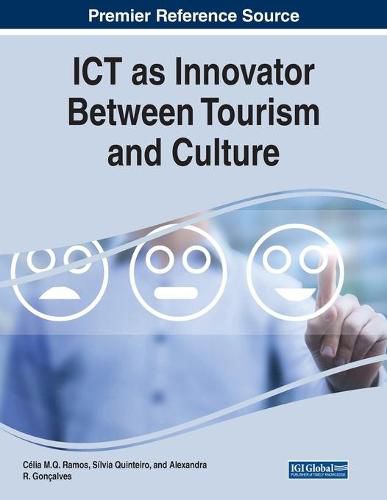Readings Newsletter
Become a Readings Member to make your shopping experience even easier.
Sign in or sign up for free!
You’re not far away from qualifying for FREE standard shipping within Australia
You’ve qualified for FREE standard shipping within Australia
The cart is loading…






This title is printed to order. This book may have been self-published. If so, we cannot guarantee the quality of the content. In the main most books will have gone through the editing process however some may not. We therefore suggest that you be aware of this before ordering this book. If in doubt check either the author or publisher’s details as we are unable to accept any returns unless they are faulty. Please contact us if you have any questions.
Lately, tourists consider their mobile devices as essential accessories for the realization of their trip before, during, and after the visit. Such devices allow them to consult information about points of interest, services, or products in real time. Thus, mobile devices have come to be considered as tools to support decision making regarding the realization of trips. In the digital environment, tourists seek complementary information to consolidate knowledge about the destination, heritage, culture, customs, and traditions that make the visited place unique. Simultaneously, they transform tourist experiences into a memory associated with travel, contribute to the sustainability of local populations, reduce inequalities, and cooperate to improve the quality of life of all involved.
ICT as Innovator Between Tourism and Culture differs from others on the same areas because it aims to place the emphasis on and increase the bridge of knowledge between information communications technology (ICT), tourism, and culture, considering ICT as the main driver that creates the development environment and enhances the tourist experience in general. In particular, it is linked to cultural heritage, making it a more sustainable and intelligent tourist destination, taking into account the well-being of the local population and visitors. Covering topics such as destination image, religious tourism, and innovation dynamics, this book is an essential resource for IT consultants, hotel managers, marketers, travel agencies, tour operators, tourism researchers, professors, students, practitioners within the tourism industry, and academicians.
$9.00 standard shipping within Australia
FREE standard shipping within Australia for orders over $100.00
Express & International shipping calculated at checkout
This title is printed to order. This book may have been self-published. If so, we cannot guarantee the quality of the content. In the main most books will have gone through the editing process however some may not. We therefore suggest that you be aware of this before ordering this book. If in doubt check either the author or publisher’s details as we are unable to accept any returns unless they are faulty. Please contact us if you have any questions.
Lately, tourists consider their mobile devices as essential accessories for the realization of their trip before, during, and after the visit. Such devices allow them to consult information about points of interest, services, or products in real time. Thus, mobile devices have come to be considered as tools to support decision making regarding the realization of trips. In the digital environment, tourists seek complementary information to consolidate knowledge about the destination, heritage, culture, customs, and traditions that make the visited place unique. Simultaneously, they transform tourist experiences into a memory associated with travel, contribute to the sustainability of local populations, reduce inequalities, and cooperate to improve the quality of life of all involved.
ICT as Innovator Between Tourism and Culture differs from others on the same areas because it aims to place the emphasis on and increase the bridge of knowledge between information communications technology (ICT), tourism, and culture, considering ICT as the main driver that creates the development environment and enhances the tourist experience in general. In particular, it is linked to cultural heritage, making it a more sustainable and intelligent tourist destination, taking into account the well-being of the local population and visitors. Covering topics such as destination image, religious tourism, and innovation dynamics, this book is an essential resource for IT consultants, hotel managers, marketers, travel agencies, tour operators, tourism researchers, professors, students, practitioners within the tourism industry, and academicians.